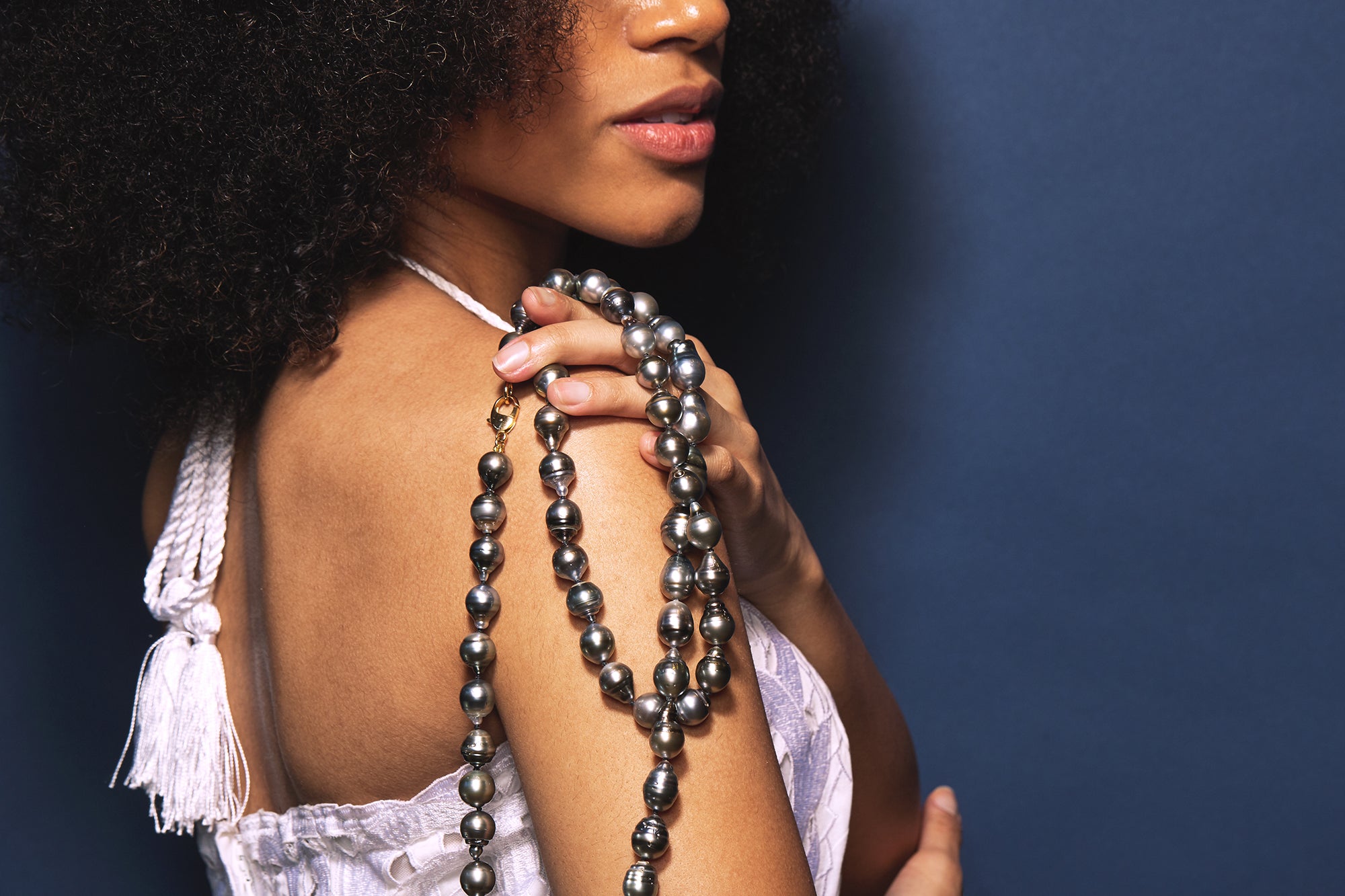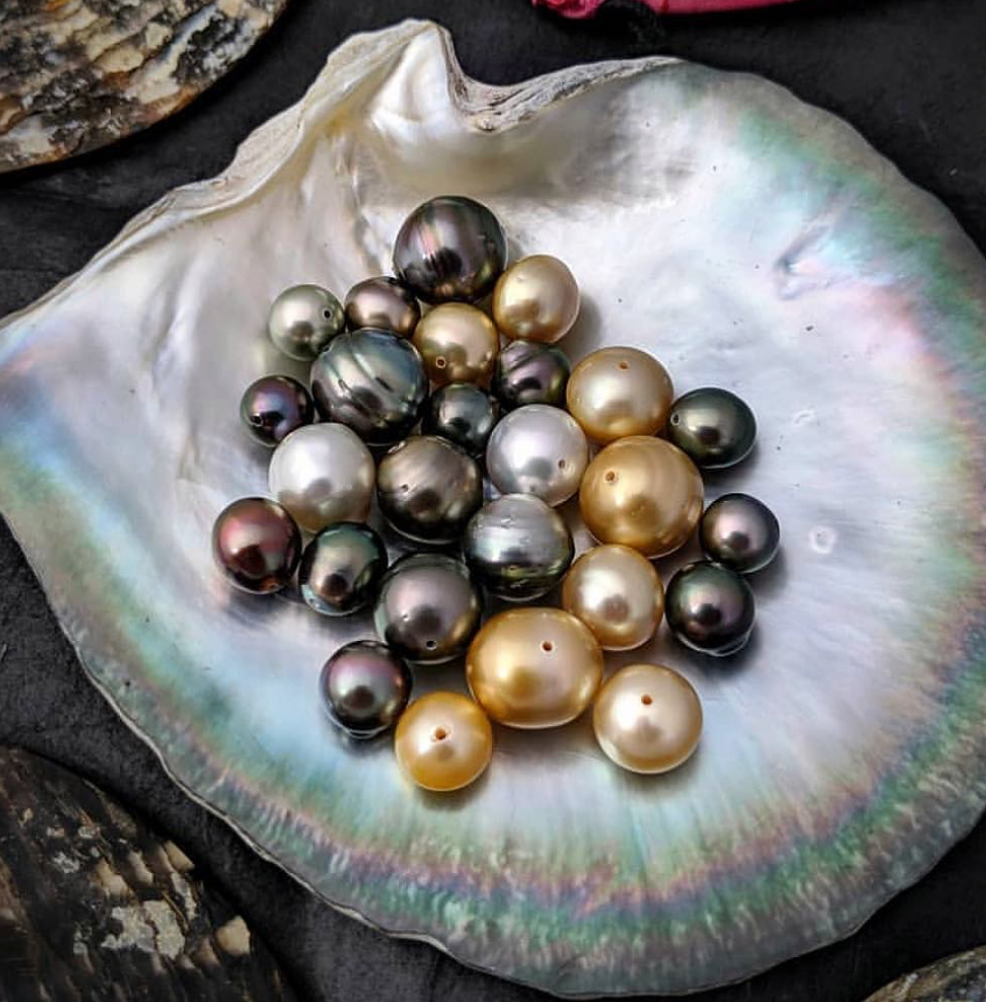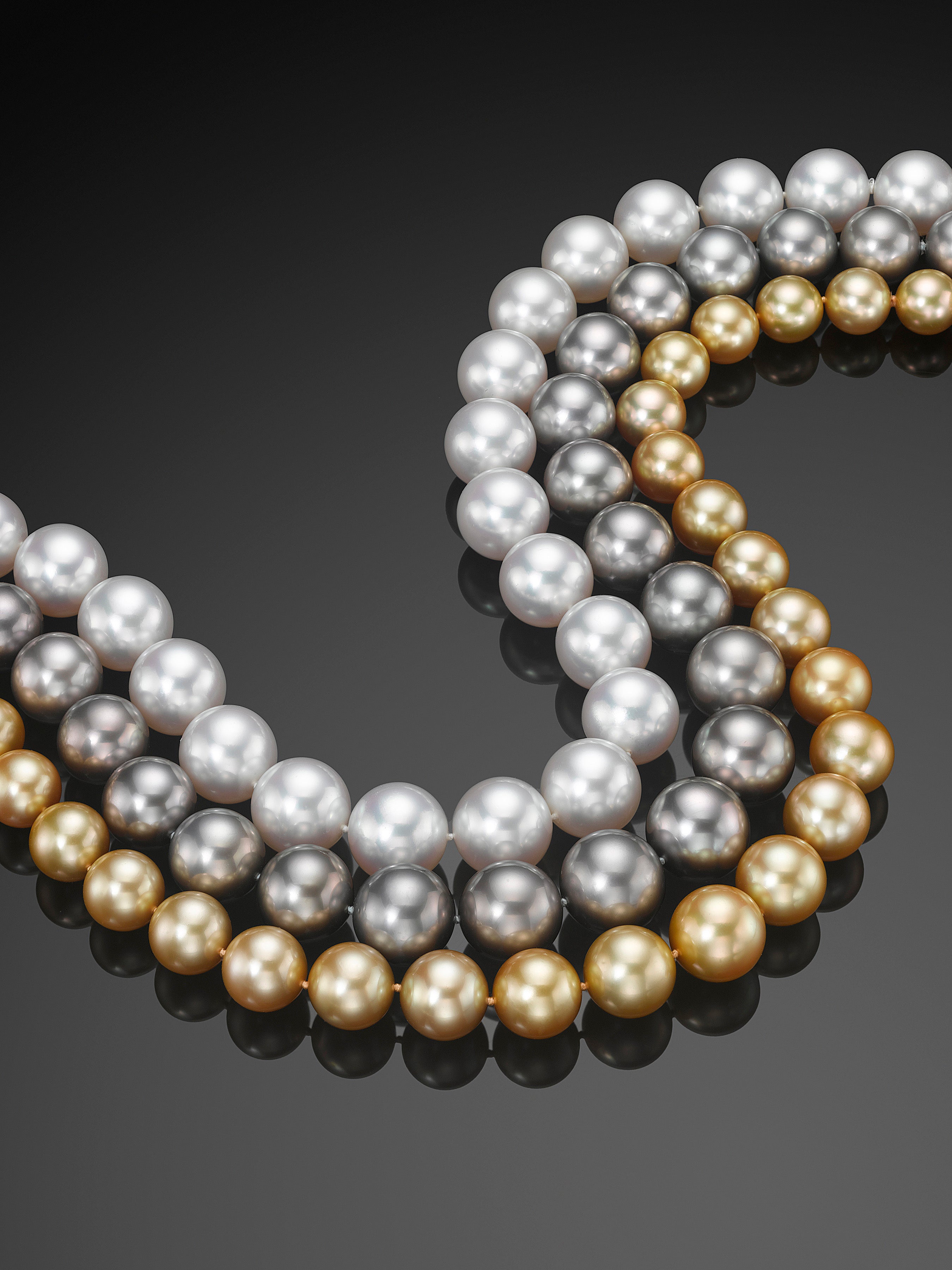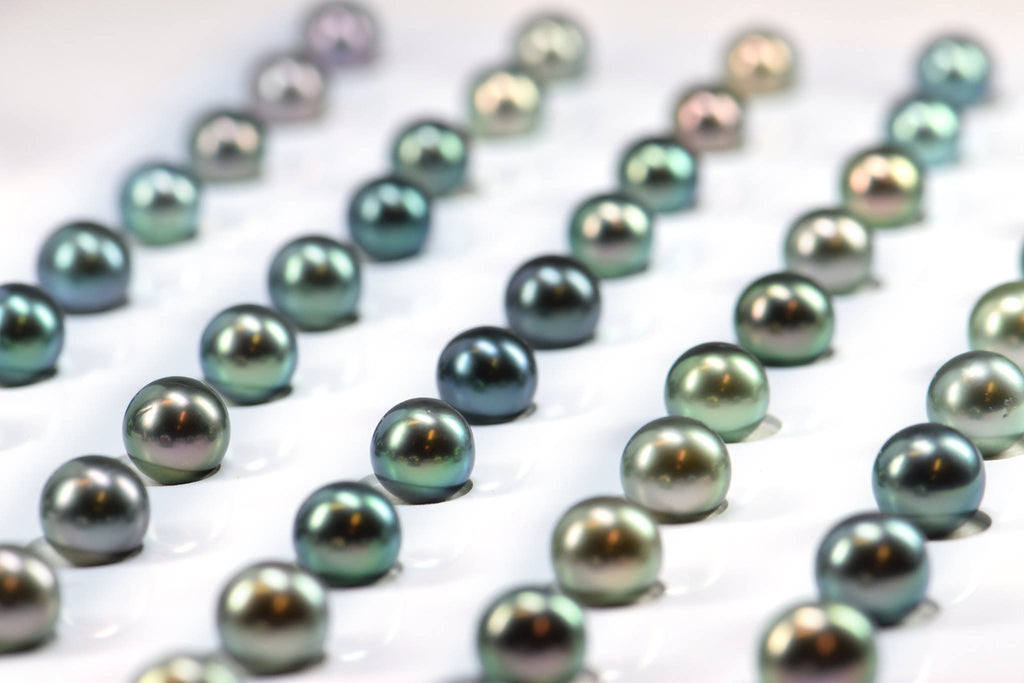My shopping cart
Your cart is currently empty.
Continue Shopping"While emeralds look like money, and diamonds glitter for attention, pearls whisper of exclusivity."
- Aja Raden


What makes Pearls so special, is that they are the only gemstone created by a living creature and because of this, they hold great prominence in the mythology of many cultures. The Ancient Greeks thought of them as tears of the gods. To the Chinese they were thought to come from the brain of a dragon and would guarantee their protection from the fire-breathing beasts. In Europe, they were adornments of modesty and purity and in Ancient Egypt, rulers took them as prized possessions to their final resting place. A true treasure of the sea that was also associated with the moon because of its spherical shape.
In the past and still today, Pearls are a popular choice among brides on their wedding day and given as a gift to celebrate the 30th wedding anniversary...although perfect for any occasion!
In saltwater, natural pearls are formed in oysters and in freshwater, cultured pearls are formed by mussels. When a foreign substance, such as a piece of sand, slips into a mollusk, it becomes an "irritant" and the mollusk's reaction is to protect itself and begins covering it by secreting layers of nacre, an organic substance also known as mother-of-pearl. Within two to six years of layering this nacre, a beautiful, lustrous pearl presents itself in the soft tissue of the mollusk. Voila!
In contrast, raising cultured pearls requires human intervention and extra care. Here, mollusks are protected from human and oceanic predators. Specially trained pearl farmers help an oyster grow a pearl by inserting an object, usually a small shell bead or sand, just like in nature, into the oyster. They are then placed in water from a year or up to six years to form their pearls. Most of what we see today are cultured pearls and they come in a sensational array of colors, sizes, and shapes.
 An array of drilled round and baroque shaped pearls from our source in Tahiti.
An array of drilled round and baroque shaped pearls from our source in Tahiti.
Natural saltwater pearls, were found along the coastlines of the Persian Gulf, India, the Red Sea, and Japan. Sadly, the over-fishing, harvesting and oil-drilling over thousand of years, eventually lead to the decimation of most natural pearl beds, making them extremely rare and can demand higher prices.
Traditionally, to find a natural pearl was a difficult venture. Japanese women known as the pearl-diving girls would dive all along the coastline sourcing oysters. This continued for centuries until a man named Kokichi Mikimoto, deemed The Pearl King, brought cultured pearls to the masses. Mikimoto was a hardworking, noodle cart boy in the small fishing village of Toba, Japan who became fascinated by watching the girls dive deep to the ocean's floor in hopes of surfacing an oyster holding a pearl inside.
He recognized this method's inefficiencies of sourcing beautiful pearls and the inevitable exhaustion of natural pearl sites. His years of trial and error led to culturing his first pearl in 1893 and soon after patented his methods. His patented process made one of the most valuable gems exclusively grown in Japan. By the early 1930's, Japan had dominated the world's pearl industry and was the country's first major, domestically produced, export product. To this day, Japan is the largest exporter of pearls in the world.

Freshwater
South Sea
Akoya
Tahitian

Pearls make for some of the most exquisite jewels and each exhibit their own unique characteristics. Completely round pearls are highly valued, but the asymmetrical shapes and unusual colors are just as special.
In general, all pearls are graded based on their luster, nacre thickness, shape, surface quality, color, and size. When you find yourself looking for a strand of pearls or a pair of sweet pearl earrings, the most important thing to remember is you will be drawn to the pearl that is perfect for you.
It may be how perfectly the light reflects off the pearls surface, also known as its luster, or maybe it'll be the slight blemishes that shows you it's not afraid to show its little imperfections. Maybe its perfectly round or has interesting ridges. Whatever it is that draws you in, Pearls always will be a classic piece you will cherish and one day pass down to your loved ones.
 Caring for Your Pearls
Caring for Your PearlsBeing a naturally soft, organic gem, Pearls require extra tender love and care. You can prevent scratches by storing your Pearls separately in a cloth bag and away from your other gemstone and metal jewelry. A general rule of thumb for all gemstones, is putting your jewelry on after applying perfumes, hair products, lotions and other cosmetics which can cause unwanted dulling of the surface and build up.
Thanks for stopping by our blog! We hope you enjoyed and learned a little something new along the way. We invite you to explore our June birthstone edit and please get in touch if you'd like to see our pearl strands not yet available on our site or need us to source some special pearls for you!